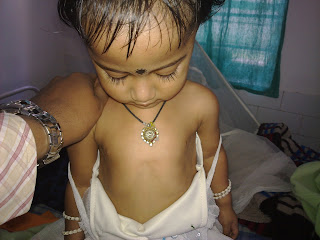HISTORY
A young child presented to our hospital with multiple cranial nerve palsies.
IMAGING
Intially a CT Scan was done for him followed by MRI.
CT SCAN
A young child presented to our hospital with multiple cranial nerve palsies.
IMAGING
Intially a CT Scan was done for him followed by MRI.
CT SCAN
There was diffuse hypodensity seen involving the brainstem and a mass was suspected. The brainstem was also expanded.
MRI
The MRI revealed a diffuse non enhancing mass involving the pons mainly with expansion of the pons and compression of the surrounding cisterns.
It was diagnosed as a case of Diffuse Pontine Glioma.
DISCUSSION :
These tumours typically present in childhood (3 to 10 years of age) and make up 10 - 15% of all pediatric brain tumors.
Presentation :
- Multiple cranial nerve palsies
- Signs of raised intracranial pressure.
- Cerebellar signs like ataxia, dysarthria, nystagmus and sleep apnoea.
Radiographic features
- Enlarged pons
- Basilar artery displaced anteriorly
- Flat floor of the fourth ventricle
- Obstructive Hydrocephalus
Treatment and prognosis
- Treatment commenced without histological confirmation.
- Chemotherapy only
- Children over 3 years of age - radiotherapy may be considered.
- Initial response can be dramatic and falsely reassuring.
Differential diagnoses
- Rhombencephalitis
- ADEM
- NF1
- Osmotic demyelination



.jpg)




























 Bow legs
Bow legs

